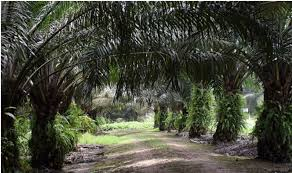Jorhat, India: Priya Ram Duwarah has planted 60 oil palm seedlings in his half-hectare (1.2 acres) of agricultural land at Mohara village in Jorhat district in the northeast Indian state of Assam.
The 65-year-old farmer, who typically grows paddy and seasonal vegetables, stepped into oil palm planting last September after being assured of high returns by the officials of the state agriculture department. While it takes the plants four years to bear fruits, he says that the wait is worth the time.
Duwarah told Al Jazeera that cultivating paddy earns him approximately 40,000 rupees ($478) a year, a sum that is “too paltry” in the wake of the rising inflation. “The government officials assured me of doubling my income,” since the region has climatic conditions favourable to oil palm and Duwarah decided to venture into the business, he told Al Jazeera, sounding enthusiastic about his new crop.
He is one of about 1,200 farmers in Assam who have taken up oil palm farming with the dream of enhancing their income.
Huge demand for edible oils
In 2014, the newly elected Narendra Modi government set up the National Mission on Oil Seeds and Oil Palm (NMOOP) with the goal of making India self-reliant in edible oils. In 2021, its name was changed to National Mission on Edible Oils-Oil Palm and the government announced an investment of 110.4 billion rupees ($1.32bn).
India is the largest importer of edible oils in the world. In the twelve months from November 2022 to October 2023, it imported 16.47 million tonnes of edible oil, including 10 million tonnes of oil palm. That was up from the previous year’s imports of 14.19 million tonnes and 8 million tonnes, respectively. Palm oil is used in a range of packaged foods, as well as soaps, cosmetics, ice cream, and other products.
While oil palm cultivation was already going on in some southern Indian states, including Andhra Pradesh, Telangana, Tamil Nadu, Odisha, and Karnataka, the Modi government decided to expand production to the country’s northeastern region including Assam.
Assam had initially allocated about 1,000 hectares (2,741 acres) of agricultural land for oil palm cultivation. But with its immense potential, the Indian Institute of Oil Palm Research in 2014 identified a total area of 375,428 hectares (927,703 acres) fit for farming.
However, despite the obvious demand for palm oil and a decade of efforts, things have not gone as planned in Assam. One of the main problems is that there are still no processing facilities in place in the state and the fruit is processed in the nearby states of Mizoram and Andhra Pradesh. The delays in that process and the resultant losses have turned off farmers who were the early adopters of the practice.
Source Link : https://www.aljazeera.com/economy/2024/7/31/in-indias-assam-hopes-dashed-for-high-returns-on-oil-palm-production















